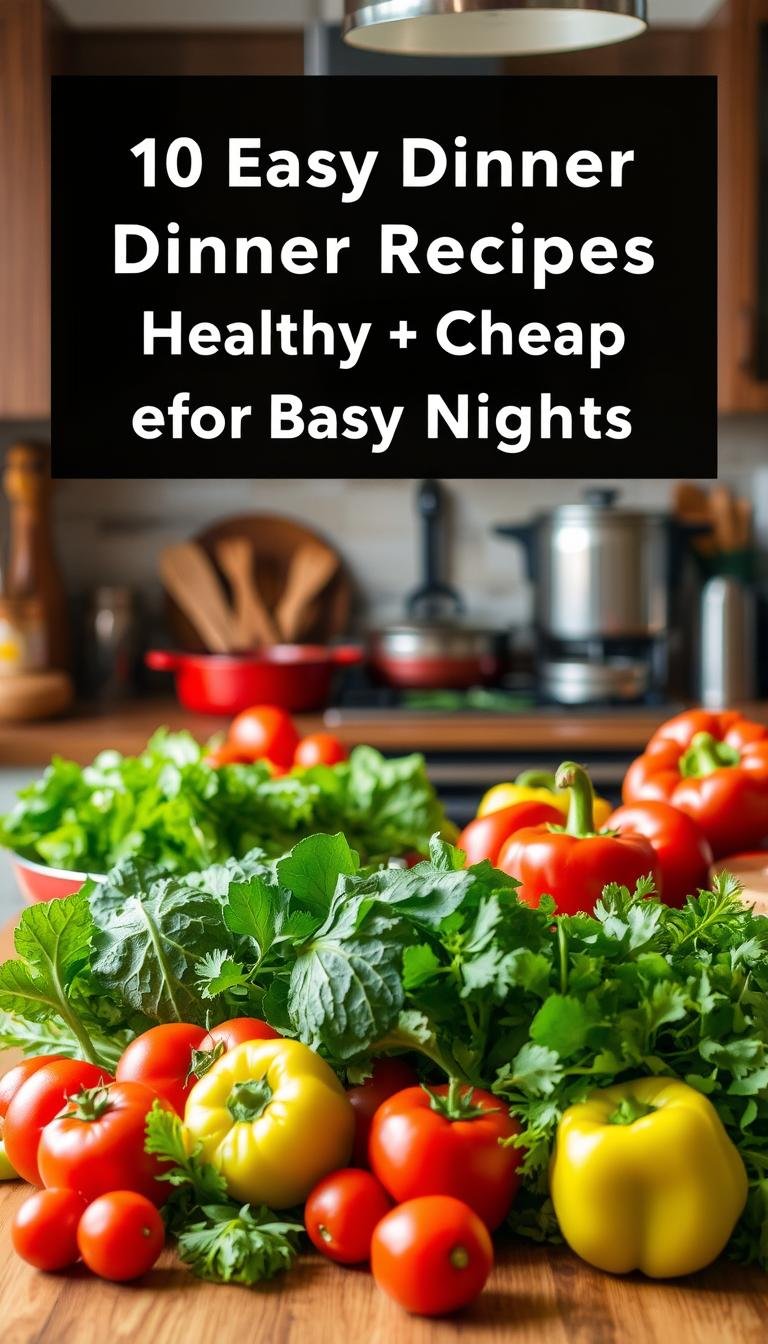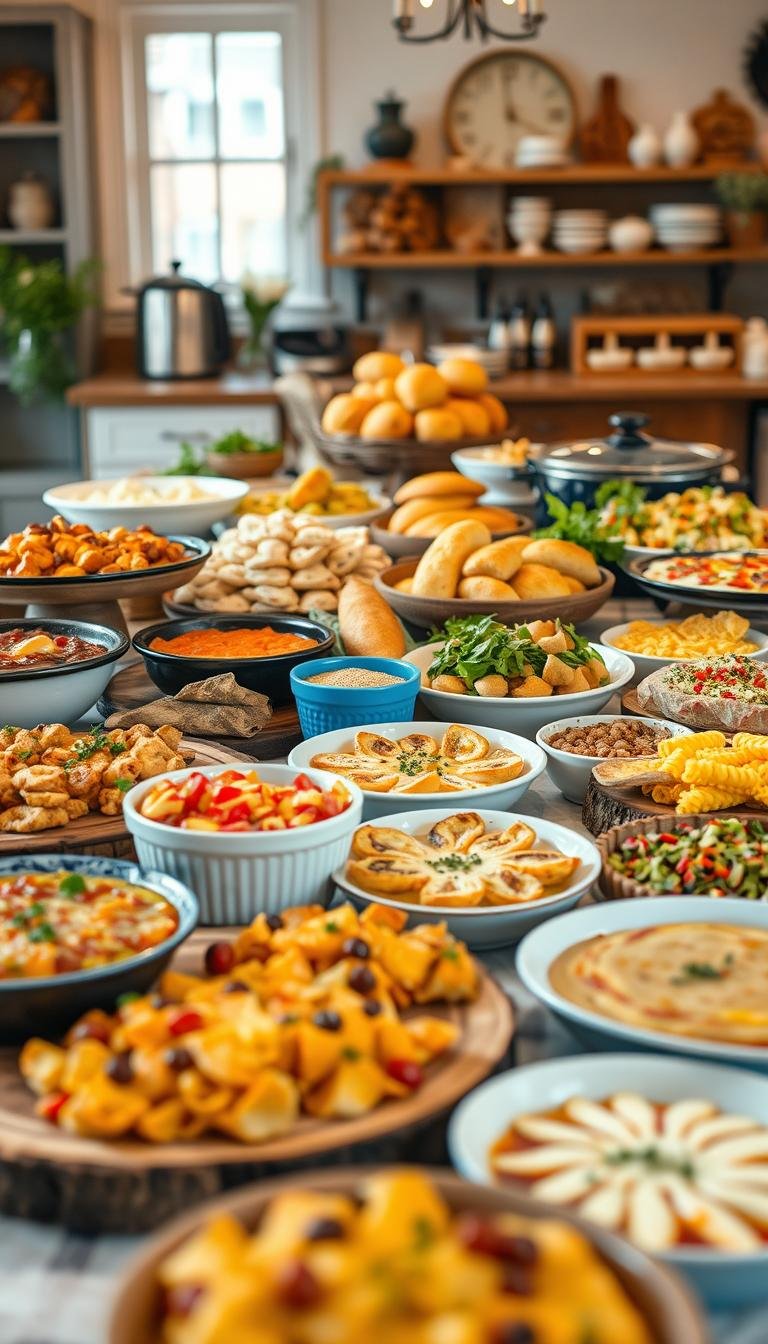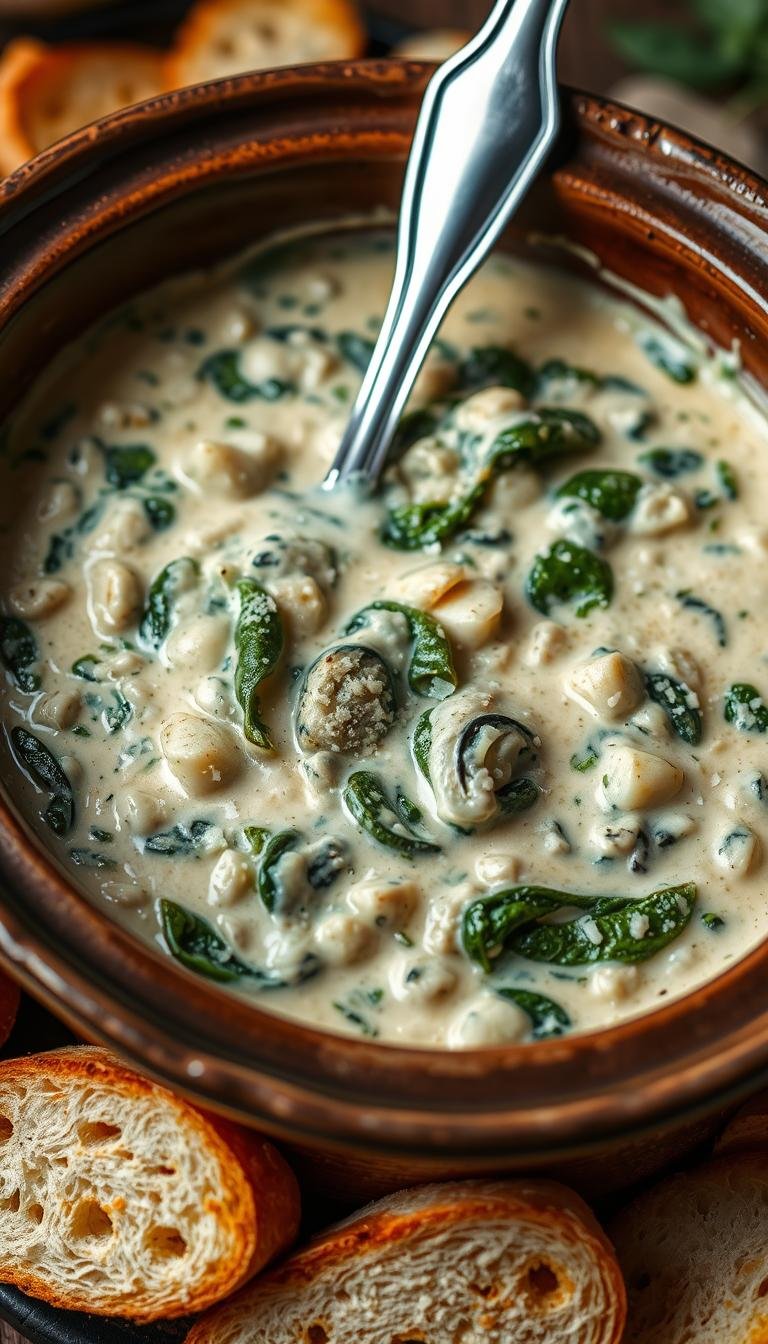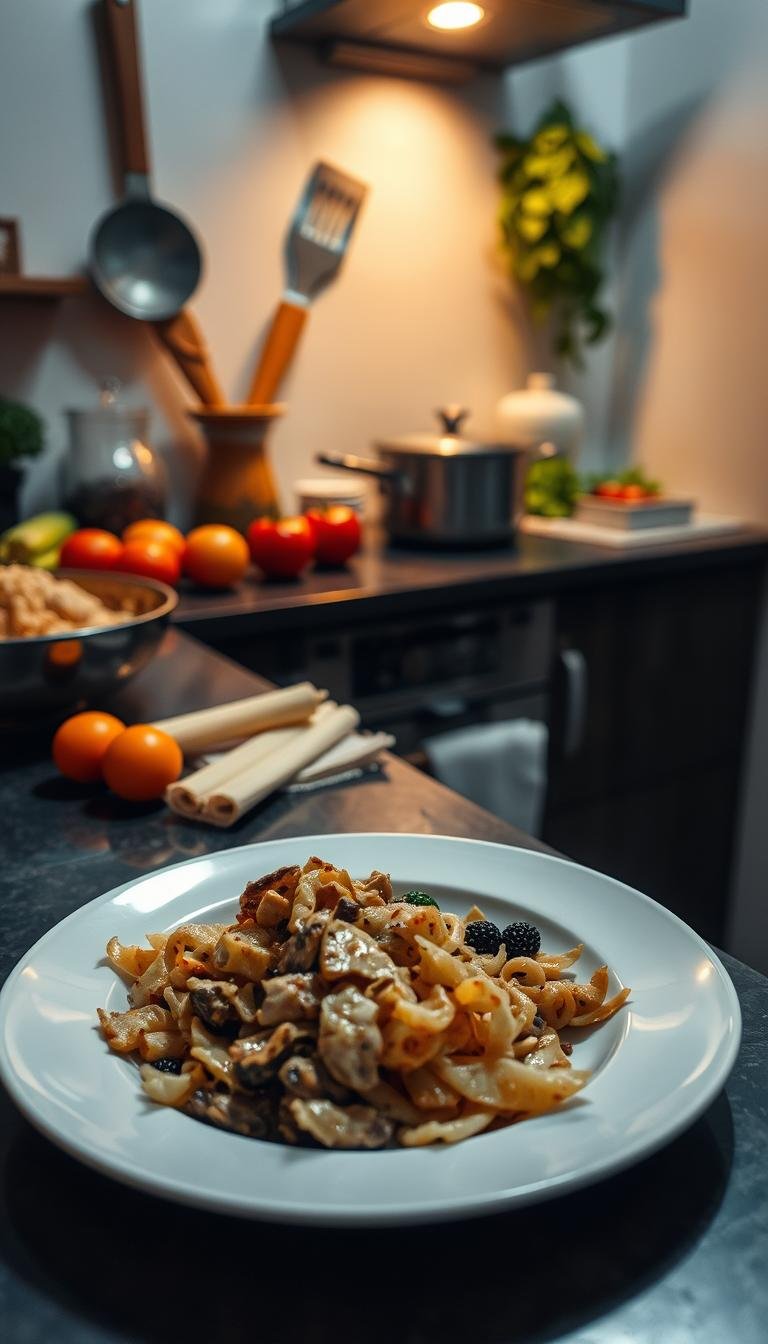10 Easy Dinner Recipes Healthy Cheap for Busy Nights
Nearly half of American households say rising food prices affect what they cook. That makes a practical plan for weeknight meals essential.
This short guide delivers a focused list of 10 low-cost, wholesome ideas and simple strategies to streamline busy-night cooking without losing flavor or nutrition. Expect fast prep and minimal cleanup by leaning on one-pot, one-pan, and sheet-pan methods that save time after work.
You’ll find recipes that stretch pantry staples—beans, chicken, pasta, grains, and veg—into multiple meals. The collection favors affordable whole ingredients, flexible vegetables, and smart swaps common in U.S. stores so you can adapt based on what you have on hand.
Practical tips include flavor-building with aromatics and spices, leftover plans to reduce waste, and quick grocery essentials for the week. Later sections add seasonal swaps, simple food-safety notes, and a fast planning method so nights stay calm and satisfying.
Key Takeaways
- Ten budget-minded meal ideas that balance cost and nutrition.
- One-pot and sheet-pan methods cut prep and cleanup time.
- Staples like beans and grains stretch into multiple servings.
- Flavor hacks (garlic, ginger, spices) lift modest ingredients.
- Leftover planning reduces waste and eases future nights.
- Grocery and seasonal swaps target U.S. shoppers.
Why easy, healthy, cheap dinners matter right now in the United States
Rising grocery bills and jam-packed schedules make smart, affordable meals a top priority for many U.S. families. Shoppers now look to the store for ingredients that stretch further and still deliver on taste.
Build meals around low-cost proteins—beans, lentils, tofu, canned tuna, and chicken thighs—to get nutrition without high spending. Leftovers from a roast chicken can fuel salads, bowls, or quick lunches later in the week.
Focus on whole foods and pantry aromatics like garlic, onion, and dried spices. These items boost flavor so modest ingredients never feel bland. Small swaps based on what’s on sale help you save money and stay flexible.
- Plan a few core dinners each week to cut decision fatigue and limit takeout trips.
- Use leftovers as a strategic asset for next-day meals.
- Adapt recipes for diverse dietary needs with simple substitutions.
| Economical Protein | Typical Cost Cue | Best Uses |
|---|---|---|
| Beans & Lentils | Low per serving | Soups, bowls, skillet dishes |
| Tofu & Canned Tuna | Stable shelf life | Stir-fries, salads, sandwiches |
| Chicken Thighs | Value cuts | Roasts, one-pan meals, leftovers |
How to shop smart today: pantry staples, whole foods, and ways to save money
A small set of go-to items in your pantry makes weeknight cooking less stressful and more budget-friendly. Start with durable staples that pair across many meals so you can build plates from what’s on hand.
Value proteins to stock: dried beans, lentils, eggs, canned tuna, and family packs of chicken thighs that you portion and freeze. Bulk beans and lentils cost less per serving and store well.
Grains and starches: buy rice, pasta, potatoes, and sweet potatoes in larger bags to lower unit cost. These staples form quick bases for bowls or sides.
Choose long-keeping vegetables like cabbage, kale, carrots, and canned tomatoes. Frozen veg is a smart backup to prevent waste.
- Keep flavor boosters on hand: oils, spice blends, soy sauce, vinegar, concentrated tomato paste, and Parmesan rinds for rich soups.
- At the store, compare unit prices, follow sales, and buy store brands for basics to save money.
Pair items simply: canned tomatoes plus white beans, carrots, and kale make a fast soup. Roast thighs over spinach and chickpeas so greens soak up the drippings. Cook once, use twice, and freeze portions of cooked beans, rice, and stock cubes for faster meals later.
easy dinner recipes healthy cheap
Plan a week of quick meals by pairing three to five go-to dishes that share ingredients and cut shopping time. Start with one one-pot or sheet-pan option to save on cleanup and pick a batchable dish for leftovers.
Pick and pair
Choose recipes that overlap ingredients—rice, canned tomatoes, and onions stretch across plates. Add a beans-and-veggies skillet and a poultry-based main like arroz con pollo to balance cost and nutrition.
Repurpose smartly
- Make extra rice or sauce; use them for bowls, stuffed peppers, or fried-rice style plates the next day.
- Cook one pasta pot like taco spaghetti or Instant Pot spaghetti and reserve half as a lunch or base for a baked casserole.
- Batch a stew or casserole so you have ready-to-heat meals and lunches.
Filter by hurry or cook time
Use the H3 subheads to sort options by protein, grain, or veg and pick dishes that match your available time. Prioritize 20–30 minute pasta or pressure-cooker meals on the busiest nights.
Quick tips: scan substitutions in each entry to match pantry stock, build flavor with staple spices, and track favorites to rotate a simple weeknight plan faster next time.
Beans on a budget: high-protein, high-fiber meals that satisfy
Beans are a budget powerhouse, offering protein, fiber, and big flavor in simple weeknight plates. They adapt to many ingredients and stretch across several meals with little fuss.
Chickpea chana-style skillet with ginger, garlic, cumin, and chile
Bloom cumin and chile in oil, add caramelized onion, fresh ginger, and garlic. Stir in canned or cooked chickpeas, simmer until saucy, and finish with cilantro.
Add spinach or kale at the end for extra greens and color.
Red lentils with spinach and tomatoes
Red lentils cook fast. Simmer lentil with crushed tomato, warm spices, and a splash of broth.
Stir in spinach until wilted. The result is silky, quick, and filling for a weeknight meal.
Tomato and white bean soup with carrots, potatoes, and kale
Combine crushed tomato and white beans with diced carrots and potatoes for heft. Add a Parmesan rind while simmering to build umami.
Squeeze lemon before serving to brighten the soup and lift the flavors.
Cannellini bean bowls with crunchy vegetables and a punchy dressing
Layer cooked cannellini with raw crunchy vegetables and a tangy herb dressing. The contrast in texture makes these bowls feel special.
Swap chickpeas for cannellini or spinach for kale to match sales and pantry stock.
| Dish | Key ingredients | Cook time | Serve with |
|---|---|---|---|
| Chana-style skillet | Chickpeas, onion, ginger, cumin, cilantro | 20–30 min | Rice or crusty bread |
| Red lentil stew | Red lentil, tomato, spinach, spices | 20 min | Flatbread or grain bowl |
| Tomato & white bean soup | Crushed tomato, white bean, carrots, potatoes, kale, Parmesan rind | 30–40 min | Toasted bread or salad |
| Cannellini bowls | Cannellini, raw veg, lemon-herb dressing | 10–15 min (assembly) | Quinoa or mixed greens |
Cook bulk dry beans when you can and freeze portions to cut cost per serving. These pulses hold up well and speed future meals.
Keep flavors bold with minimal, inexpensive ingredients: garlic, tomato, spice blends, and a bright squeeze of lemon. Serve beans over grains, with bread, or alongside a simple salad for a complete plate.
Cheap chicken dinners that stretch: thighs, ground turkey, and leftovers
Stretching a single poultry purchase into several weeknight plates saves money and time without sacrificing flavor.
Arroz con Pollo — one-pot rice and chicken
Arroz con pollo cooks tender rice with seared chicken in a single pan. Add a bay leaf if you have one.
It reheats well and makes straightforward leftovers for lunch the next day.
Chicken & Rice Casserole from pantry staples
Use milk, flour, and seasoning instead of canned soup to make a simple sauce. Toss in carrots or frozen corn to bulk the dish without extra cost.
Roasted thighs over spinach and chickpeas
Roast thighs directly over a bed of spinach and chickpeas so greens soak up the drippings. Save pan juices and bones for stock to stretch value further.
Ground turkey with garlic, ginger, and soy
Sauté ground turkey with garlic, ginger, soy, and a splash of fish sauce. Serve over rice or crisp lettuce and add snap peas or cucumber for crunch.
- Value tip: scale recipes for planned leftovers to cover a midweek meal or lunch.
- Vary spices from pantry staples to keep flavors fresh.
| Dish | Main protein | Quick add-ins |
|---|---|---|
| Arroz con Pollo | Chicken | Bay leaf, peas, carrots |
| Casserole | Shredded chicken | Milk-flour sauce, corn |
| Turkey sauté | Ground turkey | Snap peas, cucumber |
Pasta nights made healthier: quick sauces, more veggies, and budget wins
A few smart techniques turn pantry staples into pasta that tastes like it took longer to make. Prioritize simple sauces built from canned or fresh tomato, aromatics, and a little grated cheese to maximize flavor per ingredient.
Pasta Pomodoro
Use ripe tomatoes or a good-quality canned tomato and sweat garlic and onion briefly. Simmer just long enough to keep the sauce bright and fresh, then toss with al dente pasta and a handful of basil.
Cacio e Pepe
This two-ingredient classic relies on technique: stir finely grated Pecorino and lots of black pepper into starchy pasta water off the heat to create a silky emulsion. Small amounts of cheese go a long way when grated finely.
Taco Spaghetti
Cook pasta directly in a seasoned tomato broth with ground meat or beans and cumin-chili notes. One-pot cooking saves cleanup and time while producing a lively, family-friendly meal.
Spaghetti all’Assassina
Toast noodles briefly in a spicy tomato broth so they pick up char and smoky depth. The technique yields complex flavor from simple ingredients and pairs well with wilted spinach or roasted broccoli for added veg.
- Tips: swap in whole-grain or legume pasta on sale to boost fiber and protein.
- Reserve a cup of pasta water before draining to help sauces cling.
- Finely grate cheese and toss off heat to stretch flavor with less volume.
Rice and grain bowls that use pantry staples and leftovers
Grain bowls turn pantry staples and odds-and-ends into a single, satisfying plate you can build in minutes. They help you use leftover proteins and cooked rice while keeping meals varied through the week.
Vegan rice-and-bean one-pot packed with veggies and fiber
Make a big pot of seasoned rice and beans with onion, garlic, tomato, and a handful of chopped greens. Add canned beans for protein and iron, plus bell pepper or carrot for vitamin C.
Layer textures by topping the warm bowl with crunchy raw veggies, quick-pickled onions, and toasted seeds. This approach delivers fiber, micronutrients, and minimal cleanup.
Coconut-lime rice paired with saucy proteins or tofu
Cook rice in a light coconut-lime broth so it soaks up flavor and pairs well with a peanut or chili sauce. Spoon saucy tofu, shredded chicken, or a warm bean ragout on top.
Cook larger batches of rice or quinoa to anchor multiple meals. Season grains with aromatics or citrus to add interest without extra grocery items.
- Portion guidance: aim for one part protein, one part grains, two parts veggies for a balanced plate.
- Toppers to try: quick-pickled onion, toasted nuts or seeds, a squeeze of lime for brightness.
- Serve warm in winter or chilled in summer—both pack well for lunch and use small fridge leftovers.
| Style | Key pantry ingredients | Best topping ideas |
|---|---|---|
| Vegan one-pot bowl | Rice, canned beans, canned tomatoes, greens | Pickled onion, pumpkin seeds, fresh cilantro |
| Coconut-lime base | Rice, coconut milk (small can), lime, garlic | Peanut sauce, fried tofu, toasted peanuts |
| Batch grain anchor | Quinoa or brown rice, broth, aromatics | Roasted veg, seeds, lemon squeeze |
Veg-forward winners: tofu, sweet potatoes, and cauliflower
A few roast-and-toss tricks elevate tofu, sweet potatoes, and cauliflower into memorable mains.
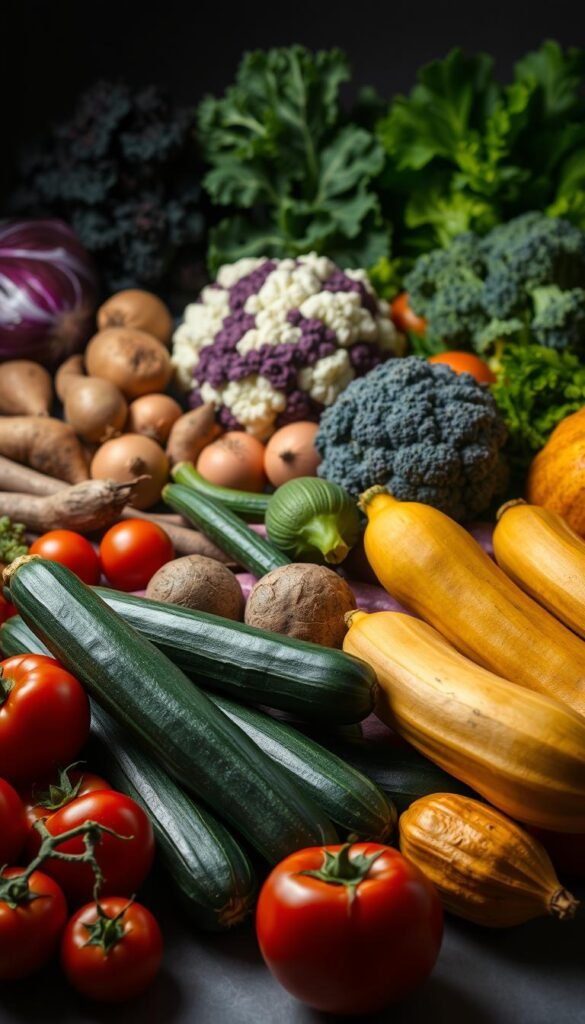
Torn-and-roasted tofu tossed in herb sauce
Tear firm tofu into irregular pieces to create craggy edges that crisp in the oven. Brush lightly with oil and roast at 425°F on a single layer so pieces brown instead of steam.
Make a bright sauce from mixed herbs—cilantro, mint, dill—or carrot tops, lemon, garlic, and a splash of vinegar. Toss the warm tofu in the sauce so it soaks up flavor and stays crunchy.
Loaded sweet potatoes with black beans and cheese
Roast whole sweet potatoes until tender, then split and fill with black beans. Add grated cheese and optional toppings like a fried egg or browned ground turkey for added protein.
Tip: brush skins with a thin layer of oil for deep caramelization. Quick slaws or pickled onions add crunch and bright acid to balance richer toppings.
Sweet-and-sour cauliflower to curb takeout cravings
Toss cauliflower florets with a light oil coating and roast until edges char. Make a simple sweet-and-sour sauce from pantry staples to mimic takeout flavors without the cost.
This approach keeps the dish gluten-free with basic sauce and topping choices. These plates scale well for meal prep and pack evenly for satisfying lunches.
- Roasting notes: 425°F, single layer, 12–25 minutes depending on size of pieces.
- Use mixed herbs and leafy tops to reduce waste and boost freshness.
- Serve with quick slaws or small salads for texture and acidity.
| Vegetable | Key add-ins | Oven temp & time | Make-it-gluten-free |
|---|---|---|---|
| Tofu (torn) | Herb sauce, lemon, garlic | 425°F, 15–20 min | Yes — use tamari instead of soy sauce |
| Sweet potatoes | Black beans, cheese, egg or turkey | 425°F, 40–50 min (whole) | Yes — skip breaded toppings |
| Cauliflower | Sweet-and-sour sauce, scallions | 425°F, 18–25 min | Yes — thickener: cornstarch or rice flour |
Quick chicken-and-cheese favorites for the whole family
When time is tight, a skillet or sheet pan can turn shredded chicken and melting cheese into fast, crowd-pleasing plates for weeknight dinners.
Chicken Quesadillas and sheet-pan scaling
Quesadillas are highly customizable: layer seasoned chicken, cheese, and sliced avocado between corn tortillas. For a crowd, arrange folded tortillas on a sheet pan, brush lightly with oil, and bake until golden. This method cuts stovetop time and feeds many at once.
Simple chicken tacos and topping ideas
Warm corn tortillas, pile on spiced chicken, then stretch portions with shredded cabbage, pico de gallo, or canned beans. Sliced avocado and a squeeze of lime add richness and balance.
| Quick step | Seasoning ideas | Stretching toppings |
|---|---|---|
| Shred cooked chicken | Chili powder, cumin, garlic | Shredded cabbage, beans |
| Sheet-pan bake | Smoked paprika, onion powder | Pico de gallo, avocado |
| Repurpose | Lime, cilantro, salt | Grain bowls or wraps next day |
Food safety note: cool cooked poultry quickly, refrigerate within two hours, and reheat to 165°F before serving. Batch-cook chicken on a weekend to speed nightly assembly and reduce weekday work.
Big flavor, small budget: stews and soups to warm any weeknight
Hearty stews and simple broths stretch a few ingredients into multiple satisfying meals across the week. Use caramelization, spice blooming, and umami boosters to build depth without extra cost.
Red cabbage tortilla-soup style with crunchy chips two ways
Caramelize shredded red cabbage to concentrate sweetness and earthiness. Sauté onion and garlic, bloom cumin or smoked paprika, then add cabbage and a splash of tomato for balance.
Blend a portion with crushed tortilla chips to thicken the liquid into a velvety broth. Reserve extra chips, bake or toast them, and use as a crisp garnish for texture contrast.
Parmesan-rind veggie soup with cannellini beans and lemon
Simmer mixed vegetables with a Parmesan rind to add savory body. Stir in cannellini beans for protein and substance.
Finish with fresh lemon to brighten the bowl. Add diced potatoes or extra tomato to bulk the pot and stretch servings affordably.
Thickening tips: purée roasted vegetables or crumble stale bread into the pot instead of cream. These methods keep bowls lighter and simpler.
- Freeze portions in airtight containers for up to three months; label with the day and contents.
- Set up a topping bar: herbs, yogurt, toasted seeds, and extra chips make plain soup feel special.
- Batch-cook on Sunday so a single pot covers several weeknight meals; soups absorb small leftover vegetables to reduce waste.
| Style | Key additions | Stretchers |
|---|---|---|
| Red cabbage tortilla-style | Cabbage, tortilla chips, tomato, spices | Potatoes, extra chips as garnish |
| Parmesan veggie & bean | Parmesan rind, cannellini beans, mixed veg | Lemon finish, diced potatoes, crusty toast |
| Freezer & serving | Portioning, airtight containers, labels | Topping bar, side salad, toasted bread |
One-pan, one-pot, Instant Pot: save time on busy nights
One-pot and one-pan methods turn a busy evening into a flavorful, low-fuss meal with minimal cleanup. They cut hands-on time and shrink the sink pile while keeping flavor intact.
Instant Pot Spaghetti with quick homemade marinara
Layer crushed tomatoes, garlic, onion, a splash of broth, and dry spaghetti so the noodles sit in the liquid. Seal and cook briefly, then release and stir to finish the sauce so the pasta stays al dente.
Deglaze before pressure cooking with a bit of broth or reserved pasta water to capture fond and build a richer sauce.
Skillet Brussels sprouts pasta with crisped chickpeas
Thinly sliced Brussels sprouts caramelize when seared in hot oil. Toss in drained chickpeas so they crisp and add protein and texture to the vegetables.
Finish with an olive oil drizzle, red pepper flakes, and grated cheese for brightness and depth.
- Method-driven efficiency: chop while the pot or pan heats to compress overall time.
- Keep a lid, tongs, and a wooden spoon within reach to move faster.
- Reheat gently with a splash of water or oil to preserve texture for next-day meals.
Stuffed, baked, and sheet-pan dinners that make leftovers easy
Oven-centered meals simplify weeknight cooking while producing reliable, slice-and-serve leftovers. These formats pack flavor into one pan and free up hands-on time.
Stuffed peppers sturdy enough to hold grains, beans, and cheese
Stuffed peppers tolerate dense fillings—cooked grains, beans, and grated cheese—without collapsing. Roast them upright so juices stay inside and portions stay neat for serving.
Tip: precook grains and fold in sautéed onion, spinach, or mushrooms to boost nutrition and texture. Bake 35–45 minutes at 375°F until peppers soften and the filling is hot.
Cheesy chicken spaghetti bake for budget-friendly batching
This bubbly casserole mixes shredded chicken, cooked pasta, vegetables, and a light cheese sauce. It holds shape well and travels or reheats without losing moisture.
Assemble in a 9×13 pan for family portions, or use an 8×8 for two to three servings. Bake covered, then uncover to brown the top for texture.
- Freezer tips: assemble, cool fully, wrap tightly, and freeze flat for up to three months.
- Bake extra to fill lunch boxes or provide a second meal later in the week.
- Vary flavors with smoked paprika, Italian seasoning, or sharp cheddar to keep repeats interesting.
- Use sheet-pan roasts to prep roasted veg or proteins that become bowls, wraps, or salad toppers beyond dinner.
| Format | Key components | Pan size & portions | Best storage |
|---|---|---|---|
| Stuffed peppers | Cooked grains, beans, cheese, veg | 6 peppers = 4–6 servings | Refrigerate 3–4 days; freeze assembled |
| Cheesy chicken spaghetti | Chicken, pasta, veg, light cheese sauce | 9×13 = 6–8; 8×8 = 2–3 | Cool, wrap, freeze or refrigerate 3 days |
| Sheet-pan roast | Root veg, chicken thighs, simple spice rub | Half-sheet = family-sized batch | Reheat in oven for best texture |
Use-it-up cooking: turn leftovers into new meals
A small plan for using leftovers multiplies meals from a single grocery run. Start by mapping what you cook this week and note which elements can be reused—roast protein, cooked grains, and roasted vegetables are the highest-value pieces.
Roast-chicken bowl blueprint
Shred roasted chicken and toss with crunchy cabbage, thinly sliced bell pepper, and lots of fresh herbs. Dress with a quick nuoc cham (fish sauce, lime, sugar, garlic, chili) for a bright, spicy meal that feels fresh.
Fast remixes and stir-fries
Stir-fry leftover veg with rice or noodles and add bite-sized chicken pieces or beans. Finish with soy, sesame oil, or a spoonful of peanut sauce to bind flavors into a single, satisfying plate.
- Storage & labeling: Refrigerate proteins within two hours, mark date and contents, and use within 3–4 days.
- Leftover map: sketch a simple list of planned repurposes after grocery shopping so you know which parts will become tomorrow’s meal.
- Reset flavors: add citrus, fresh herbs, quick pickles, or a crisp element to avoid repetition fatigue.
- Kid-friendly ideas: quesadillas, mini bakes, or stuffed pitas work well for picky eaters.
| Leftover type | Quick repurpose | Best binding sauce |
|---|---|---|
| Shredded roast chicken | Salad bowl, tacos, stir-fry | Nuoc cham or peanut sauce |
| Cooked grains (rice, quinoa) | Fried rice, grain bowl, stuffed peppers | Ginger–rice vinegar dressing |
| Roasted veg | Wraps, blended soup, pasta toss | Pesto or lemon-herb vinaigrette |
Budget note: every portion reused lowers the effective cost per meal for the week. Swap grains, greens, or dressings based on what’s in the store and your fridge to keep plates varied with minimal effort.
Budget-friendly sauces and dressings that make meals pop
A small set of go-to sauces transforms plain grains, beans, and proteins into full meals. These dressings cost little, carry well in the fridge, and refresh leftovers without extra cooking.
Peanut sauce for tofu and grain bowls
Base ratio: 3 tbsp peanut butter : 1 tbsp soy or tamari : 1 tbsp lime or rice vinegar : 1–2 tsp sweetener, thin with water or coconut milk to taste.
Drizzle over baked tofu or coconut-lime rice for a rich, nutty finish. Optional add-ins: chili paste, grated ginger, or fish sauce for depth.
Nuoc cham for crunchy chicken-cabbage salads
Mix 2 parts fish sauce to 3 parts water, 1 part lime juice, and 1 part sugar. Add minced garlic and sliced chili.
This bright dressing wakes shredded chicken and crisp cabbage. It keeps for a week refrigerated; stir before use if separation occurs.
Ginger–rice vinegar dressing for bean-and-bok choy bowls
Whisk 2 tbsp rice vinegar, 1 tbsp grated ginger, 1 tbsp oil, and 1 tsp maple or honey. Toss with cannellini beans and wilted bok choy for an aromatic bowl.
- Make small batches to avoid waste and remix with herbs or hot sauce to vary flavors.
- Re-emulsify quickly by shaking or whisking; warm a spoon to help bind chilled oils.
| Sauce | Key ingredients | Best pairings |
|---|---|---|
| Peanut sauce | Peanut butter, lime, soy, water/coconut milk | Baked tofu, coconut-lime rice, grain bowls |
| Nuoc cham | Fish sauce, lime, sugar, garlic | Shredded chicken, cabbage, bell pepper |
| Ginger–rice vinegar | Rice vinegar, ginger, oil, sweetener | Cannellini bean bowls, bok choy, mixed veggies |
Grocery list for the week: the essentials for cheap, healthy dinners
A focused grocery plan saves time at the store and keeps your pantry ready for multiple meals. Use this compact list to cover soups, bowls, roasts, and quick pan meals without extra trips.
Proteins
Beans, a bag of dried lentil, firm tofu, canned tuna, and value chicken thighs form the backbone of the week. These items last or freeze well and stretch across many plates.
Produce
Choose hardy vegetables: cabbage, a couple heads of leafy greens, onions, carrots, and tomatoes. They store well and work in soups, bowls, and roasts.
Dry goods & pantry
Stock rice, pasta, tortillas, canned tomatoes, and broth for fast assembly. Add Parmesan rinds for umami and soy sauce or vinegar as versatile flavor boosters.
- Buy store brand staples to save without losing quality.
- Check store flyers and plan around loss leaders to stretch the budget.
- Freeze portions of cooked grains, shredded thighs, or extra tofu to stabilize a busy week.
- Do a quick inventory before you shop so you avoid duplicates and overspend.
| Category | Key items | Why it helps |
|---|---|---|
| Proteins | Beans, lentil, tofu, canned tuna, chicken thighs | Long shelf life; versatile across meals |
| Produce | Cabbage, leafy greens, onions, carrots, tomatoes | Sturdy, multi-use in soups and roasts |
| Pantry | Rice, pasta, tortillas, canned tomatoes, broth | Fast bases that cut prep time |
Seasonal swaps and substitutions to match what’s in store now
Keeping a flexible approach to ingredients lets you shop smart and keep meals moving when the store has gaps or sales. Simple swaps save money, reduce waste, and keep flavors balanced across the week.
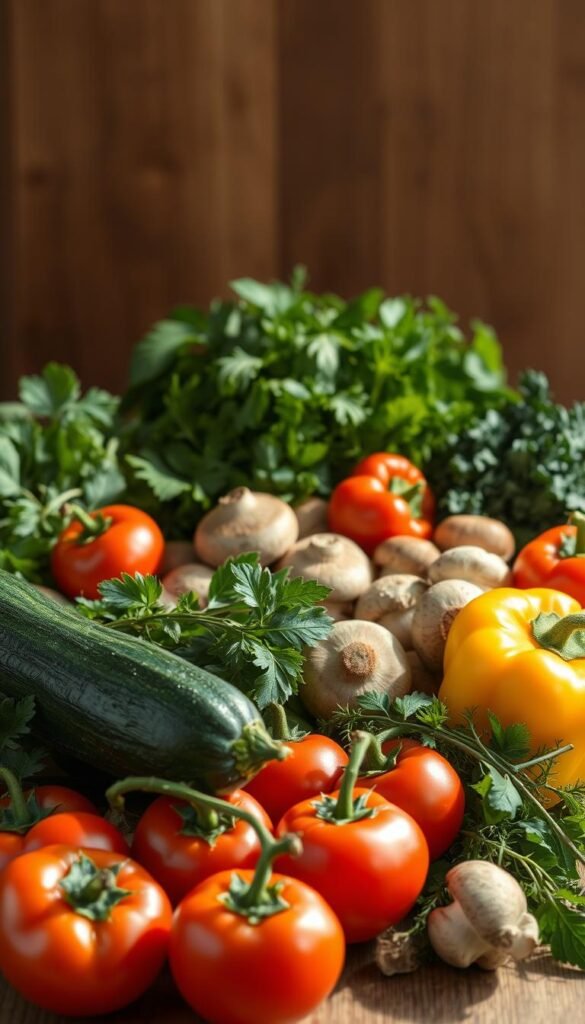
Spinach vs. kale, turkey vs. chicken, rice vs. pasta
Greens: use spinach in place of kale for soups, sautés, and quick wilts when spinach is fresher or cheaper. Wilt spinach late in cooking so it keeps texture and bright color.
Proteins: swap ground turkey for chicken (and vice versa) with small seasoning tweaks—add a touch more fat or oil when turkey is lean, or boost umami with soy or tomato paste if chicken is milder.
Grains and pasta: trade rice for pasta or noodles to match pantry stock. One-pot pasta dishes adapt well and usually keep cook time similar to a rice-based plate.
- Substitute cabbage for kale in slaws or tacos to cut cost and add crunch.
- Use cauliflower for broccoli in roasts; frozen vegetables work well if fresh produce is pricey.
- Replace one canned bean with another available variety; note texture and shorten or lengthen cook time accordingly.
- Try quinoa or bulgur when rice is low for variety and extra fiber.
Adjust liquids and salt when swapping ingredients to keep sauces and soups balanced. A small tweak—more broth, a squeeze of lemon, or a pinch of salt—keeps the meal on track.
Quick swap matrix
| Original | Swap | Use-note |
|---|---|---|
| Kale | Spinach | Wilt near end; reduces cook time |
| Chicken (ground) | Ground turkey | Add oil or umami for richness |
| Rice | Pasta / noodles | Use one-pot technique to save time |
| Broccoli | Cauliflower / frozen veg | Roast at 425°F; adjust time for frozen |
| Canned beans (type) | Any available canned/ cooked bean | Note firmness; mash slightly for thicker stews |
Flexibility reduces stress, protects the budget, and keeps a week of meals on schedule. Swap confidently and your pantry becomes an ally, not a limit.
Nutritional and food safety notes for present-day home cooks
Aim for plates that combine a lean or plant protein with a grain and plenty of vegetables so energy holds steady through the day.
Balance matters: pair legumes or lean meat with fiber-rich foods and a small amount of healthy fat for satiety. Use citrus, fresh herbs, and spices to add flavor instead of extra salt.
Practical nutrition tips
- Stretch protein: add cannellini beans to a soup for extra protein and fiber; finish with a squeeze of lemon and a Parmesan rind for umami without cream.
- Prep starches like cooked potatoes and grains ahead so you can toss together quick meals for breakfast or lunch.
- Rotate proteins across the week—plant-based, poultry, and legumes—to vary nutrients and avoid menu fatigue.
Leftovers, storage, and reheating
Cool cooked food quickly: divide into shallow containers and refrigerate within two hours. Label with the date so you use items within safe windows.
| Cooked item | Refrigerator | Freezer |
|---|---|---|
| Cooked poultry (shredded roast chicken) | 3–4 days | 3–4 months |
| Soups & stews (with beans) | 3–4 days | 2–3 months |
| Grains & potatoes | 3–4 days | 1–2 months |
Reheat gently to keep texture: warm soups on the stovetop, cover casseroles and finish in the oven, and crisp pasta in a skillet with a splash of water or oil. Leftover roast chicken is safe for salads and bowls when cooled and stored properly.
Quick habits: clean as you go, check internal temperatures when reheating, and plan a weekly soup night to boost vegetable intake and make one pot feed several meals.
Conclusion
A few pantry-forward strategies turn modest ingredients into satisfying meals any night of the week.
Build a simple plan around beans, rice, and value poultry so each meal stretches further on a tight budget. Pick formats you like—one-pot, sheet-pan, soups, and bowls—to cut stress and cleanup while keeping flavor bold across dishes.
Choose three to five favorite entries and rotate them. Use leftovers intentionally for breakfast and lunch to get more from every grocery run and reduce waste.
From taco spaghetti and arroz con pollo to torn tofu with herb sauce, small ingredient sets make many craveable recipes. With a little planning, a busy day can still end with a great-tasting, budget-wise dinner you enjoy.
